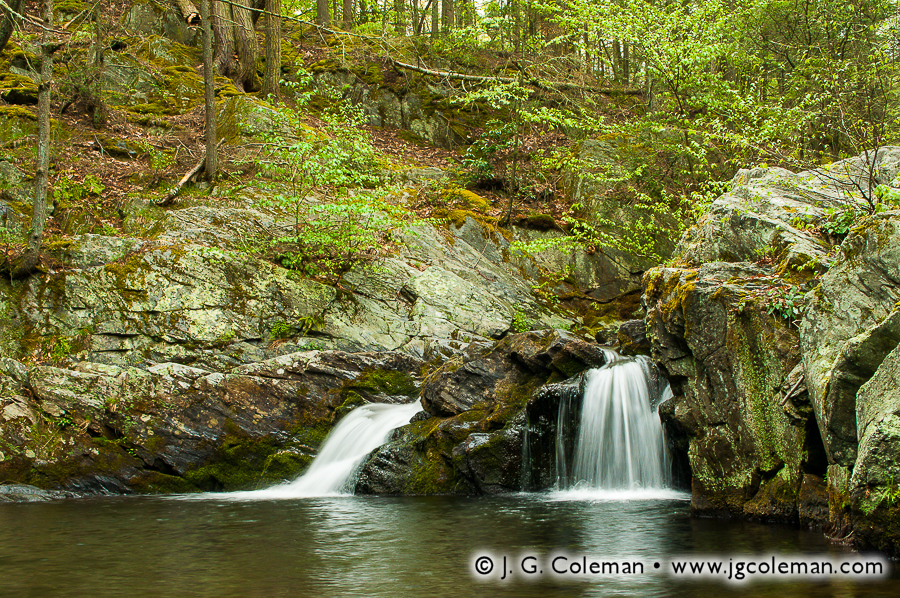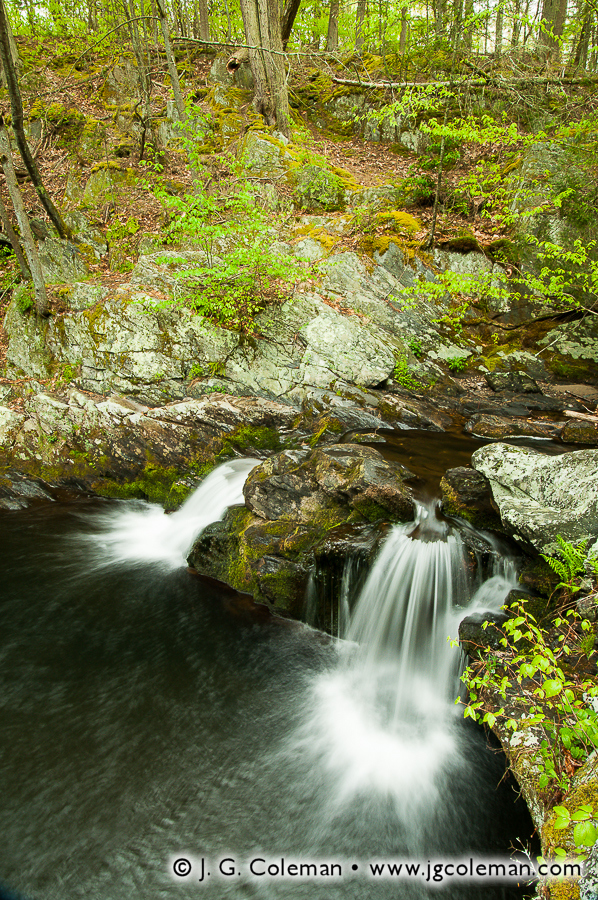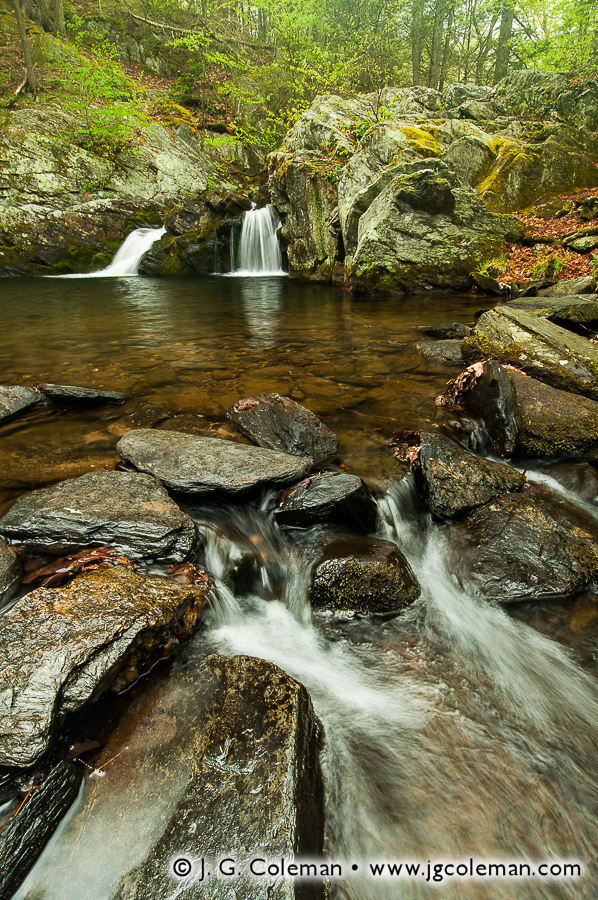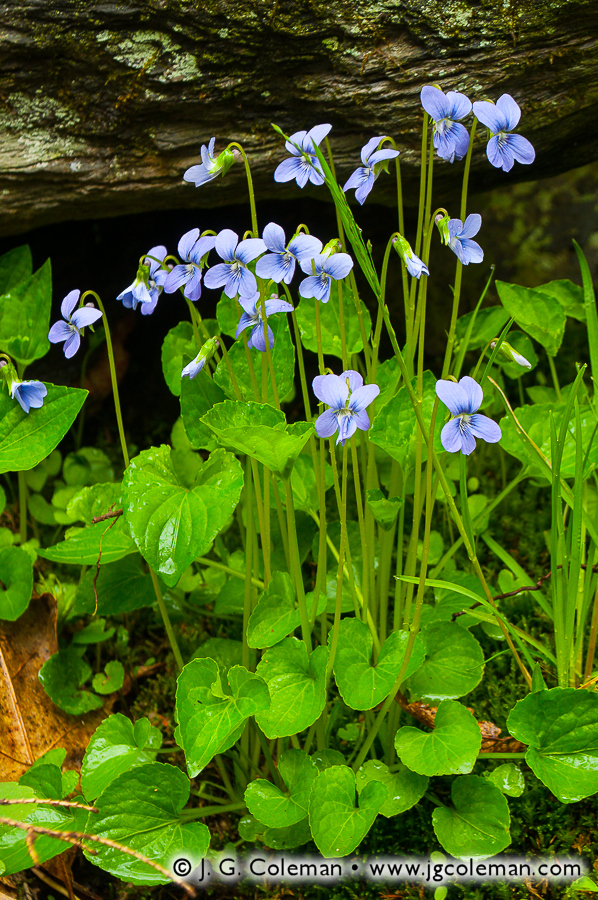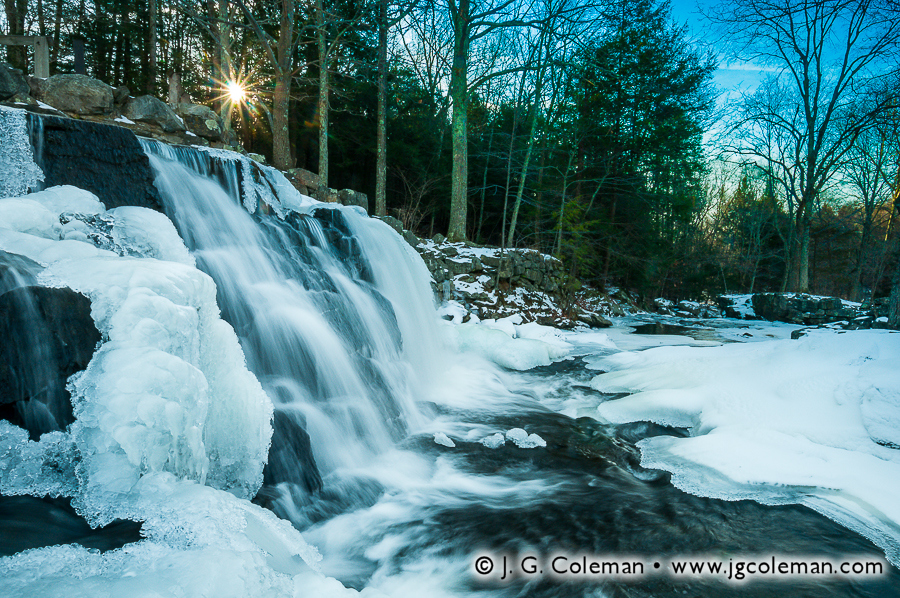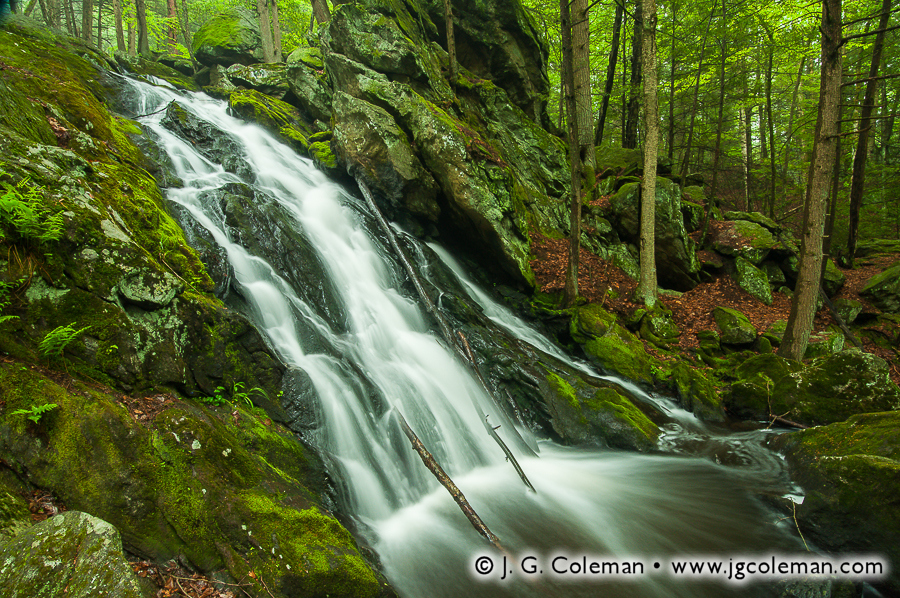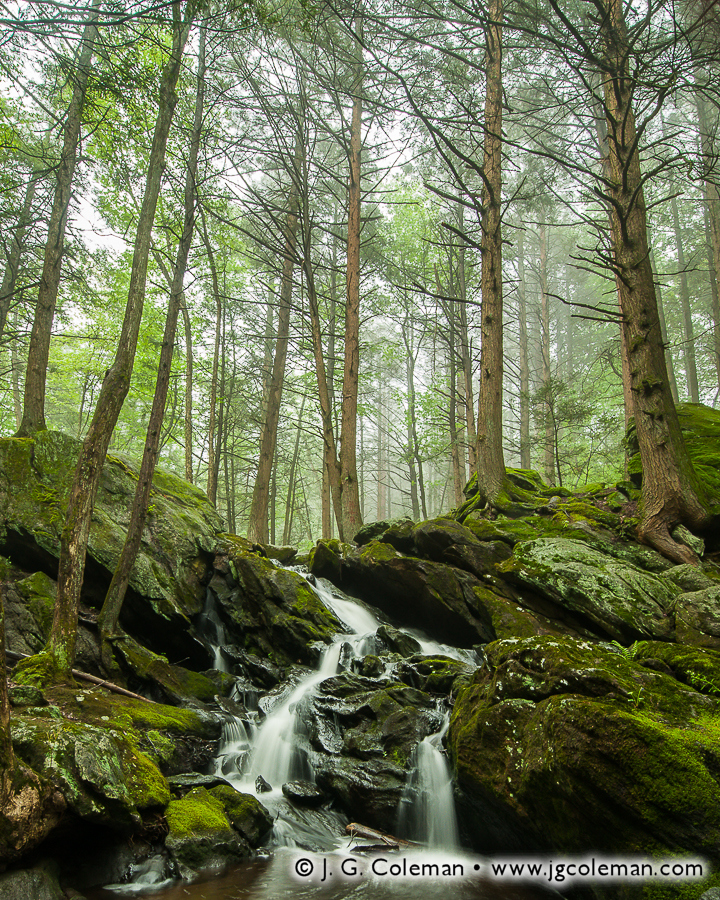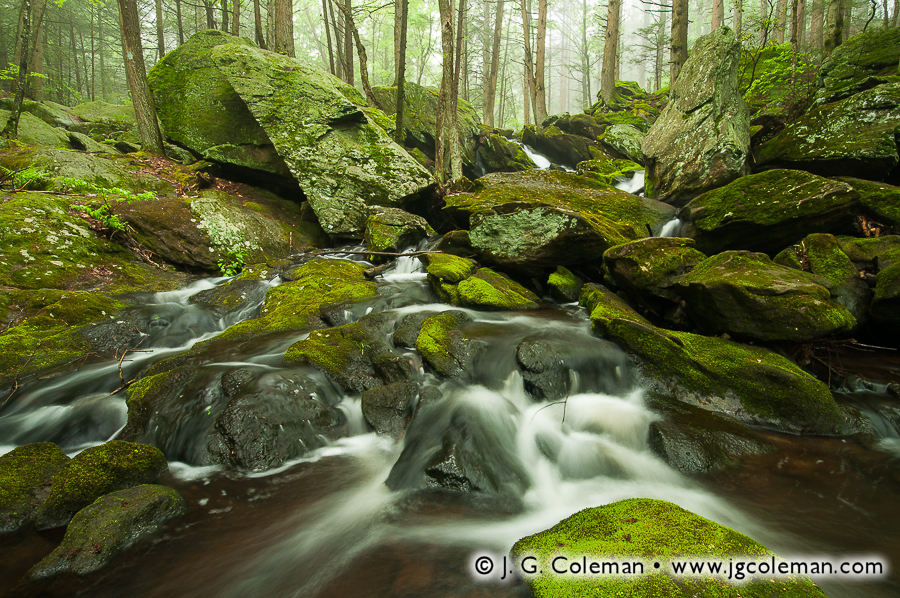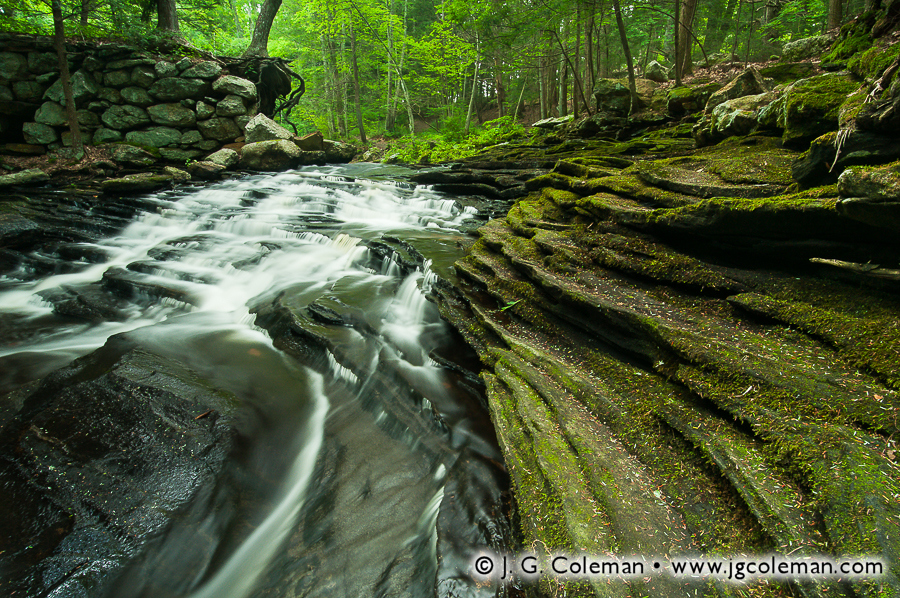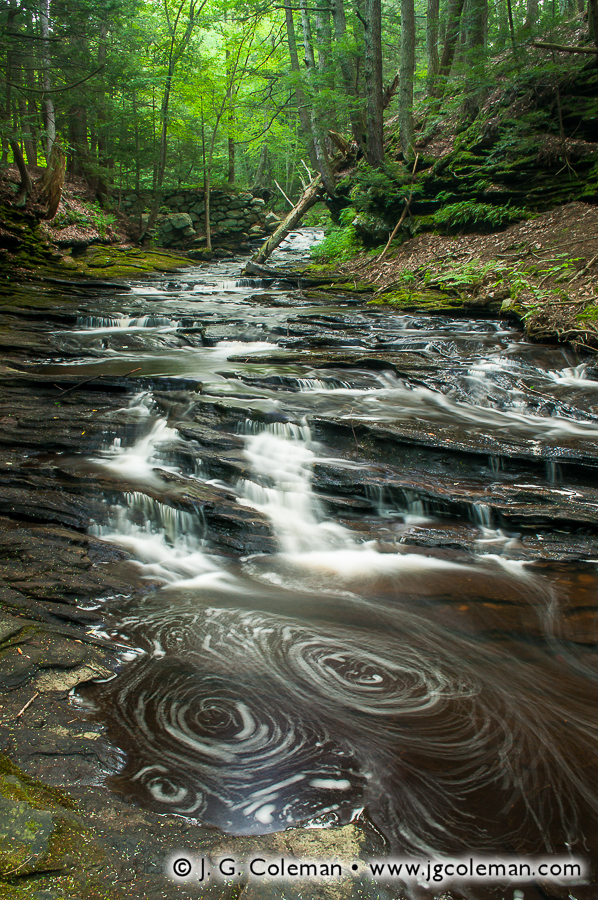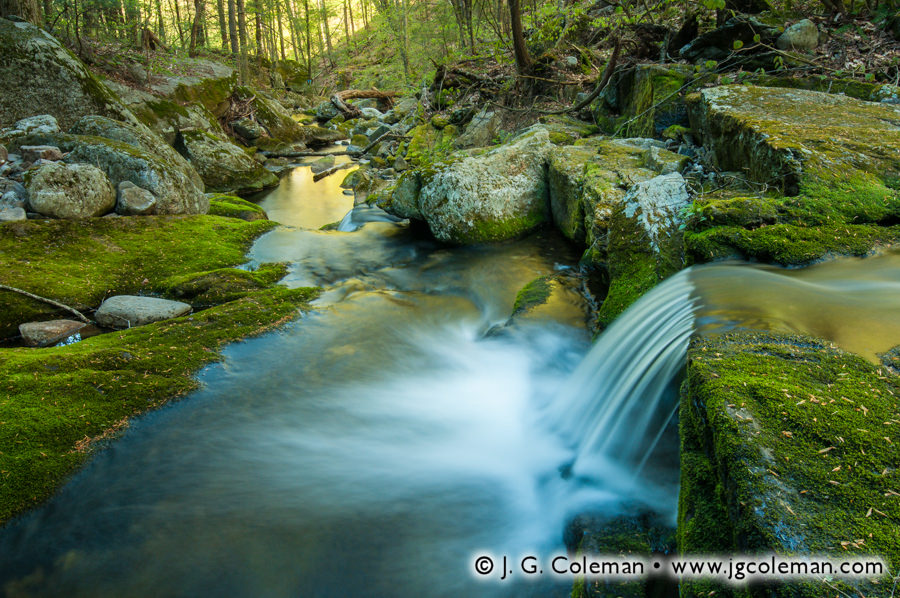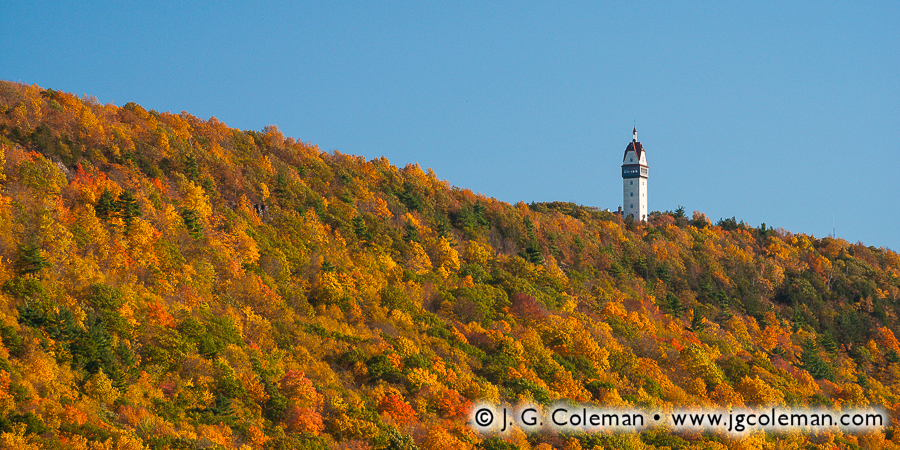
Hublein Tower on Talcott Mountain, Talcott Mountain State Park, Simsbury, Connecticut
© 2014 J. G. Coleman
My newly-released piece, Hublein’s Retreat, offers a panoramic view of the autumn ridgeline on Talcott Mountain in the north of Connecticut. This image embraces a more simplistic view of nature, emphasizing two contrasting expanses of texture and color. The vivid forest canopy, grainy with millions of leaves donning their fall hues, climbs to reach the smooth, blue yonder above. Hublein Tower rises proudly from the ridge top, adding a sense of scale and helping to balance the otherwise abstract composition.
Spanning more than a dozen miles, Talcott Mountain is part and parcel to the Metacomet Range, a chain of long, narrow traprock ridges which extends from the Connecticut coast to the southern borders of Vermont and New Hampshire. Talcott Mountain can be seen from countless places throughout the towns of Bloomfield, Simsbury and Avon, its wooded slopes rising prominently above the surrounding landscape. And if there should be any doubt as to whether or not the commanding shape on the horizon is in fact Talcott, one can quickly scan the ridge line for the impressive Hublein Tower. Standing 165-feet tall upon the crest of the ridge, this beautiful tower is just as much a local landmark as the mountain itself.
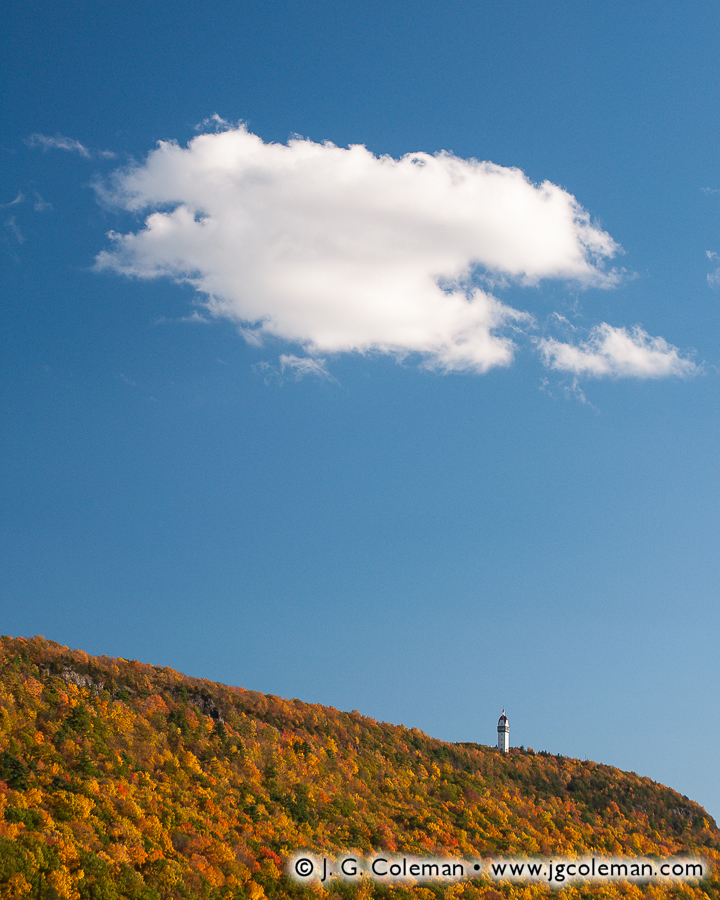
Hublein Tower on Talcott Mountain, Talcott Mountain State Park, Simsbury, Connecticut
© 2014 J. G. Coleman
My piece, Talcott’s Crown, offers some insight into the reason why Hublein Tower is such an iconic structure. In this image, I’ve captured a magnificent and rather massive white cloud as it drifted slowly over Talcott Mountain. Although this is actually a very wide, sweeping view of the ridge and the sky, we can still easily pick out the tower perched upon the mountain top, its white walls practically glowing in the afternoon sunlight. We find an even wider view of the mountain in Talcott Mountain Rustic (below), which portrays a long stretch of the ridge on the horizon behind an old tractor. Remarkably, we can still discern the towering gleaming in the distance. In an era when so many of Connecticut’s prominent ridges are topped by decidedly unattractive cell and radio towers, its refreshing to see such a beautiful and unmistakable piece of architecture gracing the crest of Talcott Mountain.
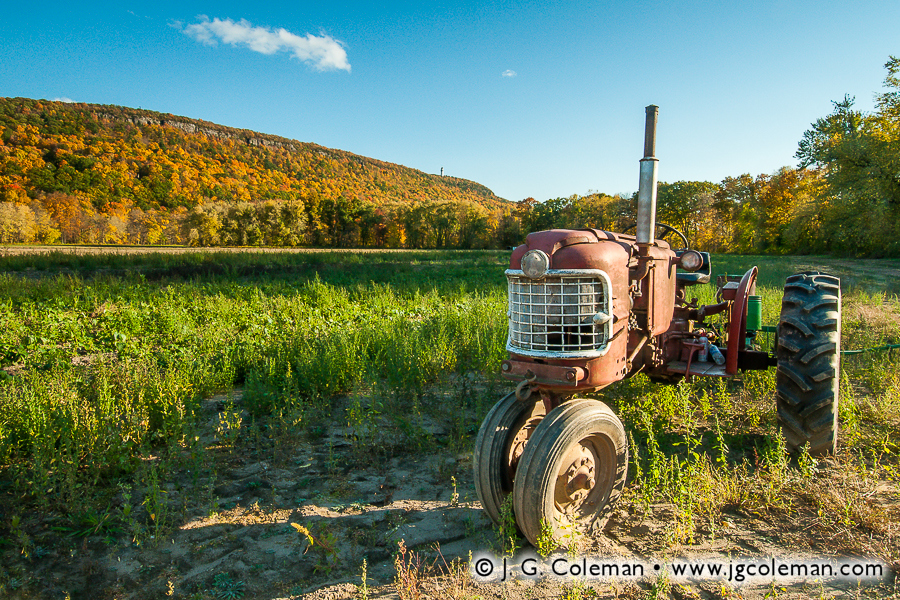
Fields near Talcott Mountain State Park, Simsbury, Connecticut
© 2014 J. G. Coleman
Built in 1914, Hublein Tower was originally the summer home of Gilbert Hublein and his wife, Louise. In their younger days before the turn of the century, the couple had enjoyed taking walks on Talcott Mountain and, as the story goes, Gilbert promised Louise that he would one day build her a castle there. Since the Hublein family was actually quite wealthy, Gilbert was able to make good on that fairy-tale promise. At the time of its completion, the six-story Hublein Tower was a place of superlative luxury, including a spacious living room, three bedrooms with their own fireplaces, a cigar room and, at the very top, a window-lined ballroom that offered spectacular panoramic views of the surrounding countryside. As if that wasn’t enough, guests could be shuttled to the upper floor by what is believed to be the first elevator ever installed in a Connecticut home!
Hublein Tower enjoyed quite a storied past through the 1950s, far too voluminous to describe here. However, by the 1960s, the 450-acre property came under the ownership of a corporation that intended to convert the tower into a restaurant and develop the ridge as a suburban neighborhood. Thankfully the idea was vehemently opposed and sufficient money was raised to buy out the development rights. The land was eventually dubbed “Talcott Mountain State Park” and has since expanded to encompass well over 500 acres of land with a beautifully-restored Hublein Tower at its heart.
Want to See More?
- To buy a fine art print or to view a larger version of any pieces seen above, visit the Talcott Mountain State Park section of my online galleries.
- My piece above, “Talcott Mountain Rustic”, was exhibited in the 2013 Arts & Agriculture exhibition hosted by the Granby Land Trust. You can read more by revisiting my November 2013 blog post here on From the Field.


